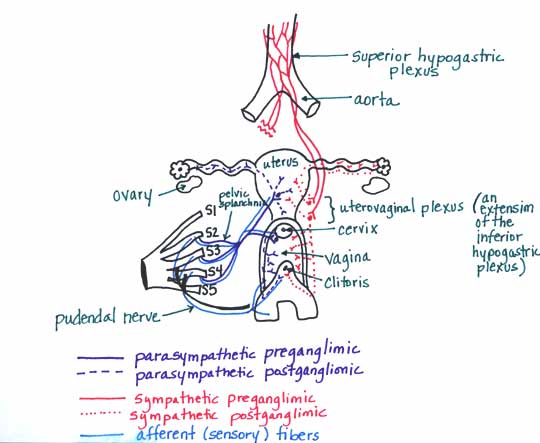|
 Clinical Sidenote: There are several ways in which pain is regionally managed during childbirth.
Clinical Sidenote: There are several ways in which pain is regionally managed during childbirth.
- A spinal block, in which anaesthetic agent placed into the L3/L4 subarachnoid space numbs everything inferior to the waist. In this case a mother would not be conscious of anything below her waist and would need to rely on electronic monitoring of uterine contractions to help deliver the baby.
- Pudendal nerve block involves direct administration of anaesthetic agent into the nerve as it exits the greater sciatic foramen. This type of anaesthetic provides a nerve block over the S2 through S4 dermatomes only, which includes the perineum and the lower one-fourth of the vagina. It does not block pain felt from the body or fundus of the uterus because those afferent fibers travel retrograde along sympathetics heading to the thoracic region. By not numbing these regions, a mother can still feel contractions and play an active role in labor.
- A caudal epidural block can be administered via an in-dwelling catheter into the sacral canal. Within the sacral canal, the agent bathes the sacral nerve roots, which reach the cervix, upper vagina and form the pudendal nerve.
|





